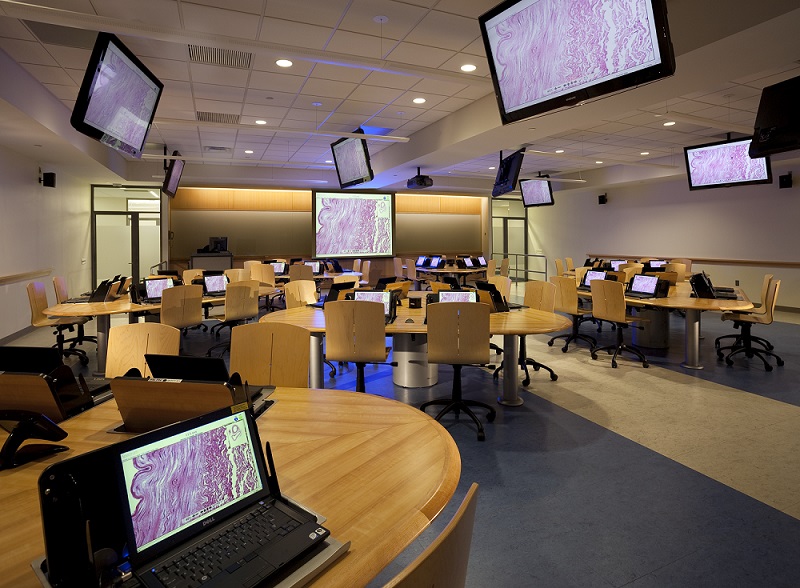
Schools and universities have a superpower: the ability to shape how we think, learn, and
interact with each other. In a hyper-polarized world, learning institutions have a responsibility to
teach students how to come to consensus. This process starts as soon as students enter the
classroom for kindergarten and follows them through their postsecondary years. Collaborative
furniture, coupled with creative pedagogy, lays the foundation for their future.
When designed well, collaborative spaces confer significant benefits to students. Why
does collaboration matter? Schools improve student learning outcomes in the short-term and
have the chance to develop human potential in the long-term.
Benefits of Collaborative Learning Spaces
Furniture layout and classroom culture combine to facilitate collaboration. Intelligent classroom design benefits learners and teachers in the following ways:
- Enhanced Communication: Collaborative environments encourage conversation. These conversations help teachers assess skills and social-emotional learning. The “flipped classroom” pedagogy, where students consume course content outside of class hours and focus on project-based learning during session, practically requires collaborative furniture to be effective.
- Flexible and Agile Layouts: The classroom is home to a panoply of ctivities: presentations, breakout sessions, group projects, and discussions, to name a few. Collaborative workspaces that include mobile furniture make it possible to seamlessly shift between uses.
- Active Learning for all Styles: Students often learn auditorily, visually, or kinesthetically. Collaborative workspaces enable educators to cater to each of their students’ unique preferences.
- Increased Accessibility: The physical layout and technological capabilities of learning spaces matter. Mobile furniture allows for rearrangement of a classrooms, creating easier navigation paths for wheelchair users and are ADA-compliant. Tables with flipIT monitor mounts provide convenient access to visual and auditory aids, if needed.
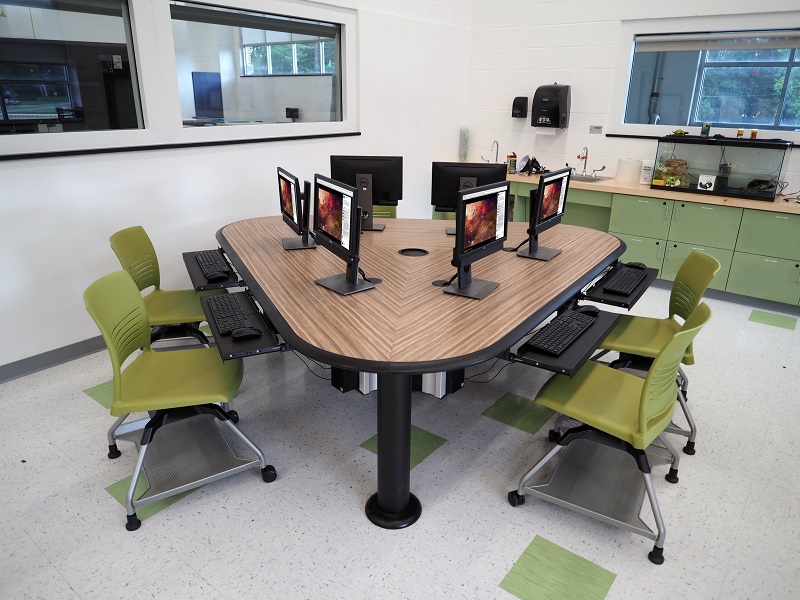
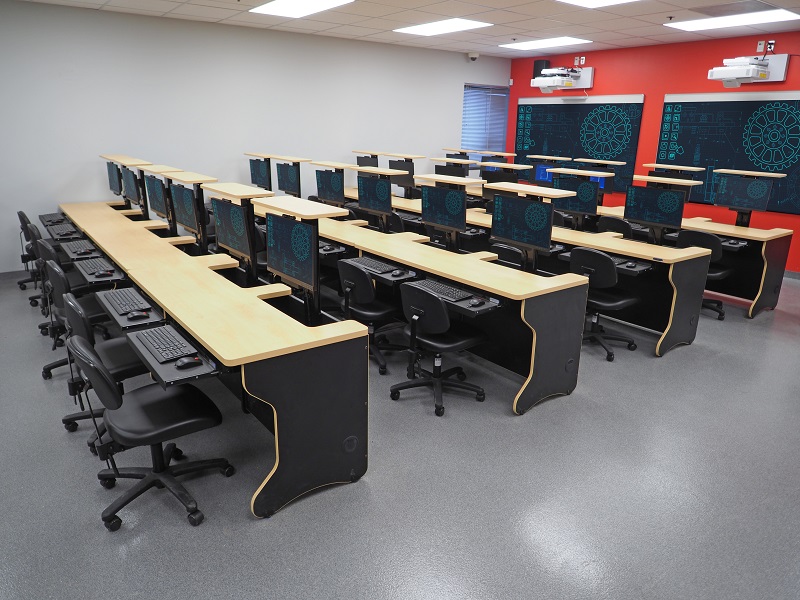
How to Promote Collaborative Learning
While schools often say they value collaboration, fostering collaboration is more easily said than done. According to one study from the UK, 25% of student learning progression at the primary school level is attributable to the classroom design and learning environment. Given the potential positive or negative effect a space can have on students, educational institutions should endeavor to design environments that unlock collaboration:
- Rethink the Layout: According to the Journal of Learning Spaces, classroom layout significantly impacts how well students learn. In this study, the classroom had an open design with moveable tables and workstations. The ability to rearrange the classroom and form groups increased interaction between students and instructors, ultimately resulting in a greater sense of classroom community, enhanced student engagement, and more comfortable and frequent interactions. The study finds that the classroom’s open and flexible design “erased the line” between themselves, their instructor, and other students.
- Intentionally Choose Furniture: Collaborative furniture makes interactive workspaces possible. These pieces of furniture have the mobility, shape, and technology to fit any purpose. The University of Colorado showed that students value classrooms with flexible layouts over rigid lecture halls that inhibit interaction. The research also stresses the importance of including a variety of functional furniture in collaborative spaces. For example, this research specifically mentions a mobile conference table and chairs set with different heights that users adapt to their unique needs.
- Create a Comfortable Environment: Physical comfort also impacts how people interact. For example, the quality of lighting affects productivity in positive or negative ways. According to the University of Mississippi, fluorescent lighting causes headaches and impairs visual performance. Each of these effects negatively impacts learners. Instead, natural light improves mood and cognitive function.
Temperature also impacts mood. Rooms that are too hot or too cold make people irritable
and uncomfortable. Ensure that your classroom is comfortable enough for the people using it.
Collaborative learning environments benefit from flexible spaces, various perspectives, adaptive furniture, and a comfortable environment. In many cases, the difference between engaging and isolating spaces is the choice of furniture.
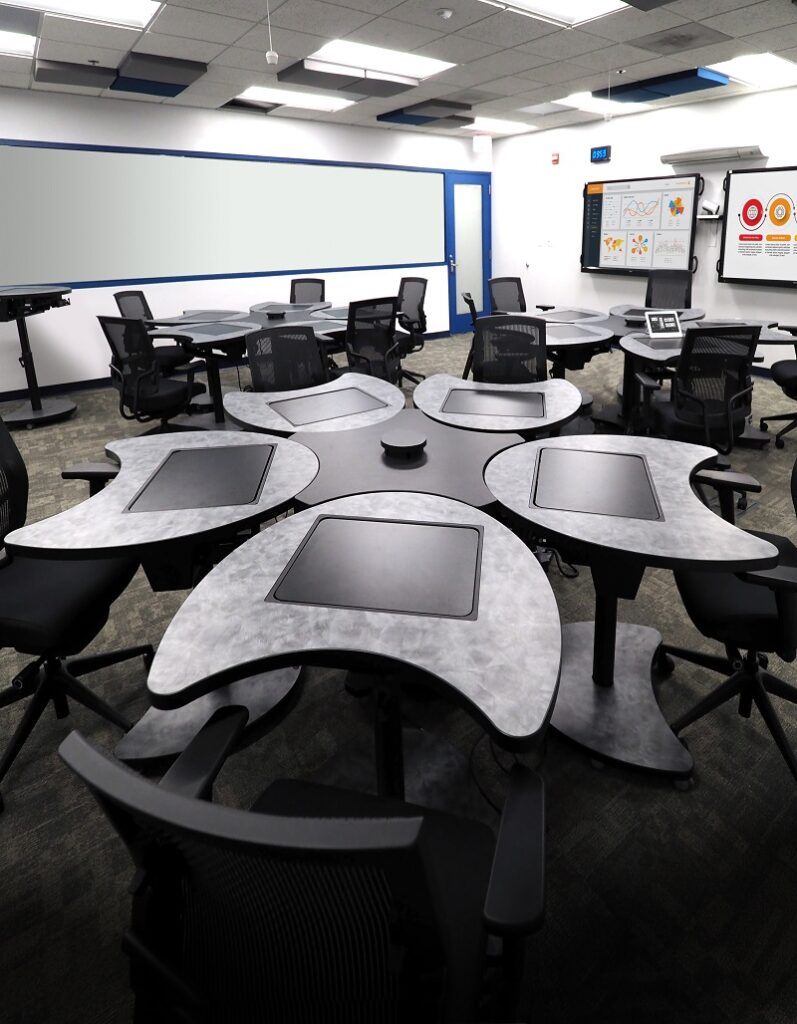
The Role of Collaborative Grouping and Peer-to-Peer Learning
Collaborative grouping in the classroom is an instructional method that breaks students into small groups to learn from each other. Also called peer-to-peer learning, this method is one of the leading educational philosophies, according to The George Washington University. Teachers facilitate collaborative learning by:
- Optimizing group sizes to allow for active discussions that involve all participants.
- Teaching active listening skills, such as eye contact, paraphrasing, and providing constructive feedback.
- Setting clear expectations and timelines that keep students focused on the activity’s goals.
- Assigning roles to group members.
- Helping students get comfortable in a group by starting with a game or icebreaker.
- Evaluating each group separately from the other groups to give feedback on their specific dynamics.
- Differentiating instruction so everyone succeeds.
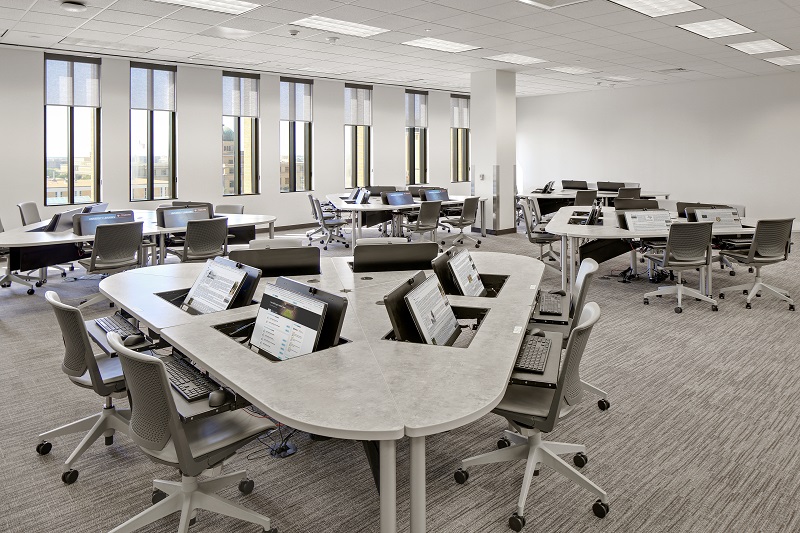
How To Arrange Furniture for Classroom Collaboration
Arranging furniture in a classroom makes a big difference in how students learn. The following considerations are key to determining how to set up a collaborative classroom:
- What age are the students? All ages learn differently. Younger students might benefit from more collaborative workspaces. Older students might work better with technology integration. Understanding which setup works best for students is essential to creating a rich learning environment.
- What is the size of the classroom? One might assume classrooms with more space are easier to design. But any size room is easy to arrange with modular furniture. From computer labs to active learning environments, SMARTdesks can create the perfect furniture dynamics for any size classroom.
- What special needs do individual students have? Some students might have special needs in their learning plan. Arranging the classroom should take different learning styles and accessibility for all.
Keep in mind that depending on the lesson or activity, the desk arrangement may need to be modified. Be open to experimenting with various setups:
- Traditional Rows: Desks are arranged in rows facing the front of the classroom. The teacher lectures using the display located at the front, enabling teachers to see the students. Students can raise their hands and are seen by the instructor. However, this arrangement is not ideal for collaboration between students.
- Clusters/Groups: Desks are grouped into small clusters facing each other, encouraging student-to-student collaboration. A cluster setup also allows for flexibility because students are easily move around the classroom.
- U-Shaped: Desks are arranged in a U-shape facing the front of the classroom. Typically, the teacher’s desk is front-and-center in the room. Students collaborate with others more easily than in traditional rows.
- Circle: Desks are arranged in a circle, so students face each other, encouraging open discussion. Not all students will face the front, so lecturing with a whiteboard is less effective.
- Semi-Circle: Desks are arranged in a half-circle facing the front of the classroom. As with rows and groups, teachers can instruct students from the front. Similar to the U-shape, the semi-circle also encourages discussion.
Every layout has advantages and disadvantages, so educators should select one that fits the specific needs of their students and the activities they want to do in class. One study suggests that the best classroom layout should be left to the teachers because they know which arrangement is the most effective for their class. Using SMARTdesks furniture designed for collaboration, spaces easily adapt to teachers’ and students’ needs.


